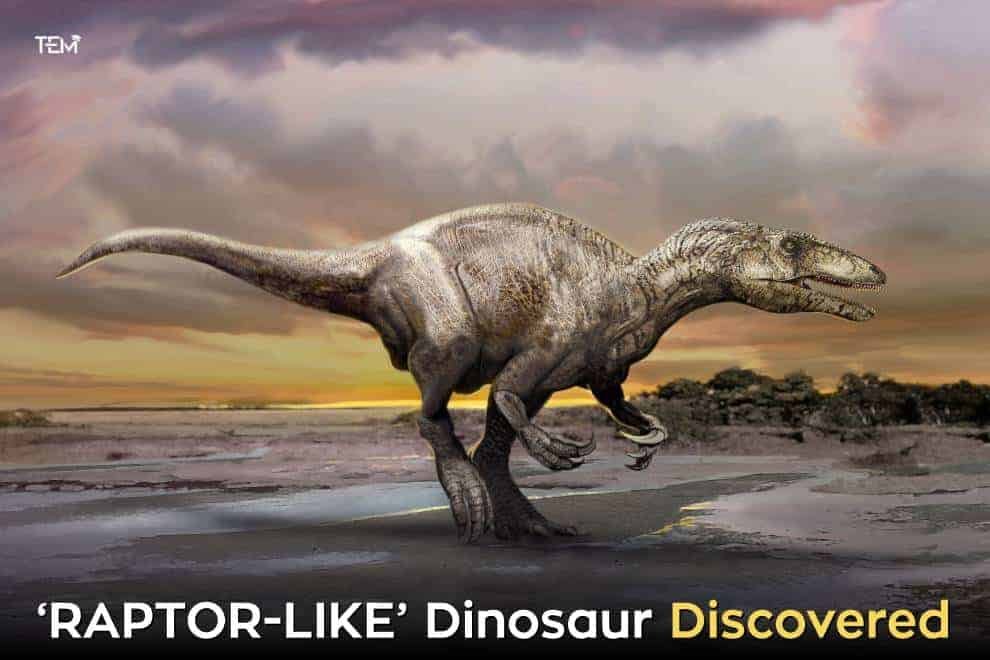Key Highlights:
- Fossil footprints unearthed in Australia that were long considered to be those of a huge raptor-like carnivorous dinosaur turn out to be a timid long-necked herbivore.
- The study team thought there was something wrong with the original size estimations, and they had reason to be concerned.
- The dinosaur footprint is on exhibit at Brisbane’s Queensland Museum.
Raptor-like dinosaur uncovered as a herbivore
Fossil footprints unearthed in an Australian coal mine approximately 50 years ago were long considered to be those of a huge raptor-like carnivorous dinosaur, but experts now believe they were instead left by a timid long-necked herbivore.
Dr. Anthony Romilio, a paleontologist at the University of Queensland, recently led an international team to re-examine the imprints, which date back to the late Triassic Period, about 220 million years ago.
“For years, it was thought that these footprints were created by a gigantic theropod predator from the dinosaur family Eubrontes, with legs over two meters tall,” stated Dr. Romilio.
“This notion generated quite a stir decades ago since no other meat-eating dinosaur in the world came close to that size during the Triassic period.”
However, results published today in the peer-reviewed journal Historical Biology by a team of international experts reveal that the tracks were produced by a Prosauropod — a vegetarian dinosaur with legs around 1.4 meters tall and a body length of six meters.
Lack of detail the likely cause
The study team thought there was something wrong with the original size estimations, and they had reason to be concerned.
“Unfortunately, most previous researchers were unable to directly access the footprint specimen for their study, instead of relying on outdated sketches and pictures that were lacking in detail,” Dr. Romilio explained.
The dinosaur bones were discovered about 200 meters below at an Ipswich coal mine, close west of Brisbane, more than 50 years ago.
The footprints – referred to as ‘Evazoum‘, scientifically, the footprint type made by prosauropod dinosaurs – were made on the water-sodden layers of ancient plant debris, with the tracks later in-filled by silt and sand, according to Hendrik Klein, co-author and fossil expert from Saurierwelt Paläontologisches Museum in Germany.
“This explains why they occur now in an upside-down posture just over our heads,” Mr. Klein explained.
“After millions of years, the plant material degraded into coal, which miners removed to reveal a siltstone and sandstone ceiling, complete with natural castings of dinosaur footprints.”
A remarkable discovery
The mine has long since closed, but luckily, geologists and the Queensland Museum surveyed the trackway and created plaster castings in 1964, which are being utilized in contemporary studies.
“The more we examined the footprint and toe imprint forms and dimensions, the less they resembled predatory dinosaur footprints — this giant dinosaur was certainly a much gentler plant-eater.”
“Even if it isn’t a terrifying Triassic predator, this is still a remarkable discovery.”
“This is the earliest evidence we have for this sort of dinosaur in Australia, spanning a 50-million-year period before the first quadrupedal sauropod fossils were discovered.”
The dinosaur footprint is on exhibit at Brisbane’s Queensland Museum.
Also Read: Did The Solar System Kill The Dinosaurs? Find Out Here










